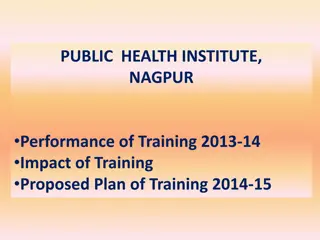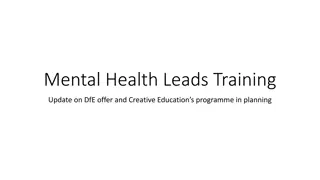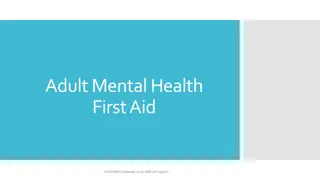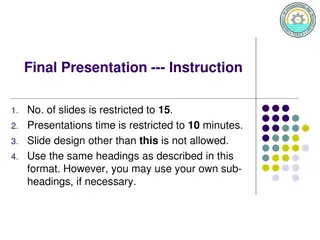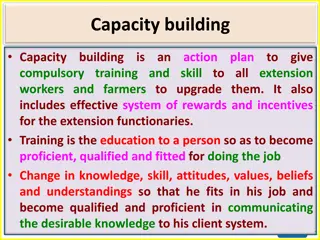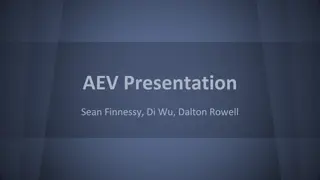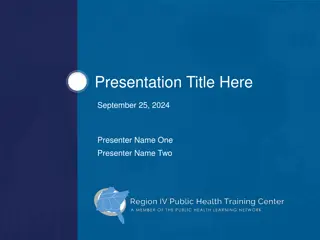
Health Training 2023 Final (003)
Analyzing Internal and External InfluencesnAccessing Information nInterpersonal CommunicationnDecision MakingnGoal-SettingnSelf-ManagementnAdvocacyn
Download Presentation

Please find below an Image/Link to download the presentation.
The content on the website is provided AS IS for your information and personal use only. It may not be sold, licensed, or shared on other websites without obtaining consent from the author. If you encounter any issues during the download, it is possible that the publisher has removed the file from their server.
You are allowed to download the files provided on this website for personal or commercial use, subject to the condition that they are used lawfully. All files are the property of their respective owners.
The content on the website is provided AS IS for your information and personal use only. It may not be sold, licensed, or shared on other websites without obtaining consent from the author.
E N D
Presentation Transcript
Health Literacy Skills • Analyzing Internal and External Influences • Accessing Information • Interpersonal Communication • Decision Making • Goal-Setting • Self-Management • Advocacy
Teaching Skills-Based Health Education • Discuss the Importance • Explain the Steps • Model How to Use the Skill • Provide Adequate Time for Students to Practice • Utilize Formative Assessments
Analyzing Influences • Analyzing Influences: Students will analyze the influence of family, peers, culture, social media, technology, and other determinants on health behaviors.
Analyzing Influences How to Use in the Classroom • Discuss the Importance • Explain why it is important to develop the skills to analyze various influences on health behavior • Discuss potential health issues, concerns or problems associated with poor skill development in analyzing influences (i.e. CDC six risk behaviors – safety, behaviors that lead to poor sexual decision-making sexual behaviors, unhealthy eating , unintended injuries, drug and alcohol use issues, bullying, peer pressure, unintended injuries, behaviors that lead to poor sexual decision making ). • Explain the Steps • Identify external and internal factors and how they influence behavior • Describe external and internal factors and how they influence behavior • Explain external and internal factors and how they influence behavior • Examine external and internal factors and how they influence behavior • Analyze external and internal factors and how they influence behavior • Evaluate external and internal factors and how they influence behavior • Model How to Use the Skill • Choose at least two external and internal influences and determine if it is a positive or negative influence. • Provide Adequate Time for Students to Practice • Give students an opportunity to identify their own internal and external influences and if they are a positive or negative influence. • Utilize Formative Assessments • See next slides
Analyzing Influences External Factors Connolly, 2018
Analyzing Influences Internal Factors Connolly, 2018
Analyzing Influences External Example Connolly, 2018
Analyzing Influences Internal Example Connolly, 2018
Accessing Information Accessing Information: Students demonstrate the ability to access valid information, products, and services to enhance health
Accessing Information How to Use in the Classroom • Discuss the Importance • Explain why it is important to access valid information • Discuss potential health issues, concerns or problems associated (i.e. if it’s on the internet it’s true). • Explain the Steps • Identify health resources that enhance health • Analyze health resources that enhance health • Compare health resources that enhance health • Evaluate health resources that enhance health • Model How to Use the Skill • Go to a website and complete an evaluation form to determine if it is valid and reliable. • Provide Adequate Time for Students to Practice • Give students an opportunity to locate their own website and complete the evaluation form • Utilize Formative Assessments • See next slides
Interpersonal Communication • Interpersonal Communication: Students demonstrate effective interpersonal communication skills to enhance health. (Effective communication enhances personal, family and community health)
Interpersonal Communication How to Use in Classroom • Discuss the Importance • Explain why it is important to develop healthy interpersonal communication skills • Discuss potential health issues, concerns or problems associated with poor interpersonal communication (i.e.. Family issues, bullying, peer pressure, unintended injuries, behaviors that lead to poor sexual decision making ). • Explain the Steps • Demonstrate healthy ways to express needs, wants, and feelings • Demonstrate how to respond to dangerous situations • Demonstrate how to tell a trusted friend or adult if threatened • Demonstrate active listening skills • Demonstrate refusal, negotiation, and collaborative skills • Demonstrate nonviolent strategies to resolve conflict • Model How to Use the Skill • Create a "freeze thaw skit" and have students engage in unscripted scenarios with analyzed outcomes. • Provide Adequate Time for Students to Practice • Give students an opportunity to reflect on concerns , issues or problems in their life and create a healthy outcome to a real situation they are facing • Utilize Formative Assessments • See next slides
Techniques for Effective Negotiation Using Interpersonal Communicaton Skills • Know what you want and describe it. • Communicate what’s acceptable and what’s not. • Present clear and rational ideas that support your position. • Try to understand the other person’s point of view. • Look for ways to compromise that are acceptable to you. • Come to an agreement. • Be prepared to give a clear NO message if you’re unable to negotiate an agreement that’s acceptable to you.
Decision Making • Decision Making: Students demonstrate effective decision-making skills to enhance health.
Decision Making How to Use in Classroom • Discuss the Importance • Explain why it is important to make healthy decisions • What are some common health problems children experience and do these problems require them to make a decision? • Explain the Steps • Identify situation that requires a decision • Analyze when to make it alone or with an adult • List healthy options • Predict the outcomes • Choose a healthy option • Defend and analyze the outcome of the decision • Model How to Use the Skill • Create a case study and have students help the character make a healthy decision\ • Create a scenario then explain each step and apply to scenario • Provide Adequate Time for Students to Practice • Give students a problem or have them create their own and apply decision making steps • Utilize Formative Assessments • Red/yellow/green
Decision Making Model - DECIDE • D – Define the Problem • E – Explore the Alternatives • What are my options? • C – Consider the Consequences • Pros and Cons • I – Identify My Values • D – Decide to Act • E – Evaluate the Results
Goal-Setting • Goal-Setting: Students demonstrate the ability to use goal setting skills to enhance health.
Goal Setting How to Use in Classroom • Discuss the Importance • Explain the importance of using goal-setting to enhance social emotional health • Explain the Steps • Assess personal needs • Set long-term and short-term goals based on a need • Track progress • Identify helping resources • Develop strategies that adjust to time, ability, priorities, and responsibilities • Prepare an effective long-term personal health plan • Model How to Use the Skill • Show the students what the skill looks like in action • Provide Adequate Time for Practice • Provide the students with a situation and have them identify short- and long-term goals • Utilize Formative Assessments • See next slides
Goal-Setting Model - SMART • S – Specific • M – Measurable • A – Achievable • R – Relevant • T - Timely
Self-Management • Self-Management: Students will demonstrate health-enhancing behaviors to adopt and maintain healthy behaviors. (An observable skill)
Self-Management How to Use in Classroom • Discuss the Importance • Statistics on chronic disease • Explain the Steps • Identify the importance of taking personality responsibility for health • Exhibit the importance of taking personality responsibility for health • Explain the importance of taking personality responsibility for health • Analyze the importance of taking personality responsibility for health • Model How to Use the Skill • Demonstrate healthy behavior • Provide Adequate Time for Students to Practice • Give students an activity for them for them to practice • Utilize Formative Assessments • See next slides
Advocacy • Advocacy: Students demonstrate the ability to advocate for personal, family, and community health.
Advocacy- How to Use in Classroom • Discuss the Importance • Advocating for personal, family, and community health to improve overall health • Explain the Steps • Promote personal health by taking a stand on a health issue and support their position with relevant and accurate information. • Advocate for healthy families, friends, and community. • Encourage peers to make healthy choices. • Model how to influence and support others. • Use social norms to develop a health message. • Adjust that viewpoint and communication strategy for different audiences. • Model How to Use the Skill • Public service announcement • Provide Adequate Time for Students to Practice • Give the students a scenario and have them practice ways to advocate for others health • Utilize Formative Assessments • Checklist or rubric
Conclusion • It is recommended to implement 1 – 2 health-literacy skills in each lesson • You can scaffold each health-literacy skill by focusing on 1 or 2 steps for each lesson • Be sure to give students an adequate amount of time to practice • Engage students with a variety of prompts





